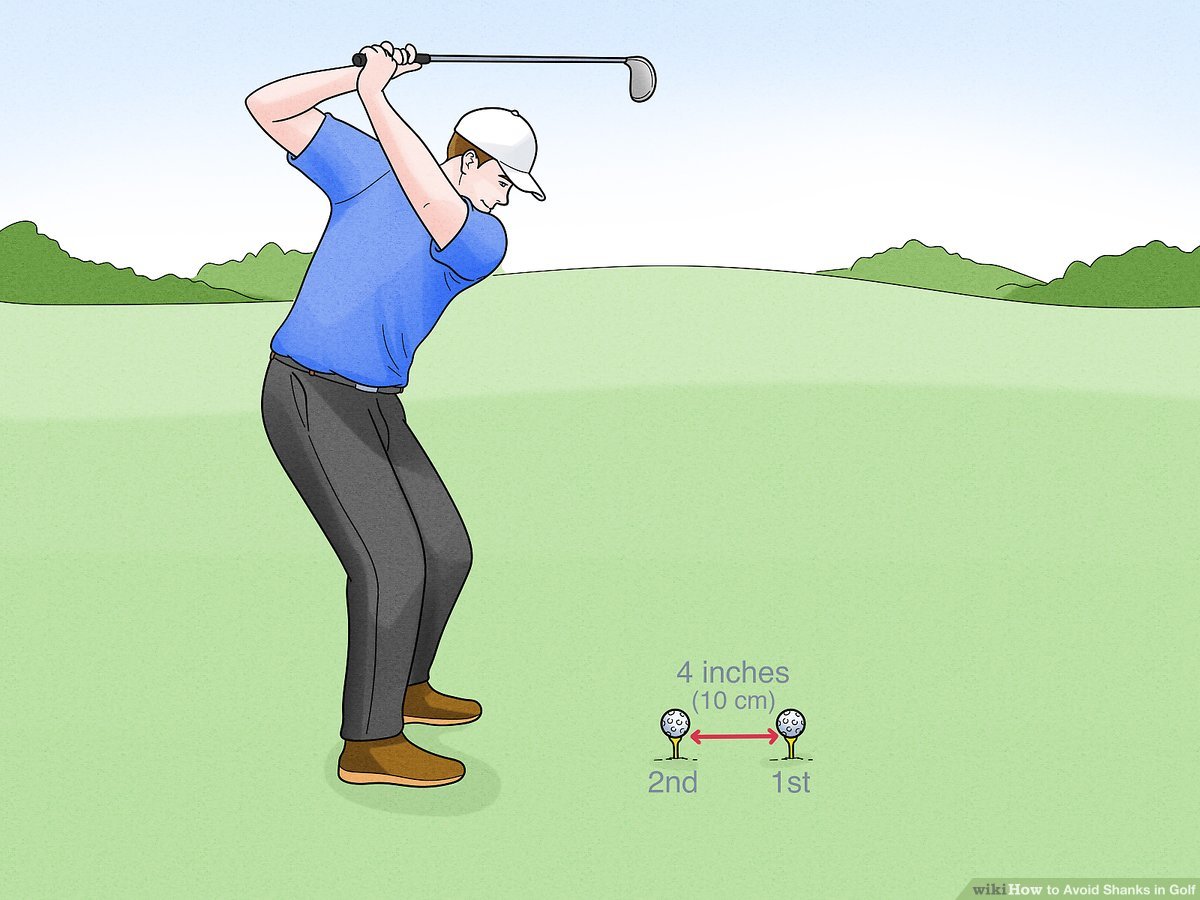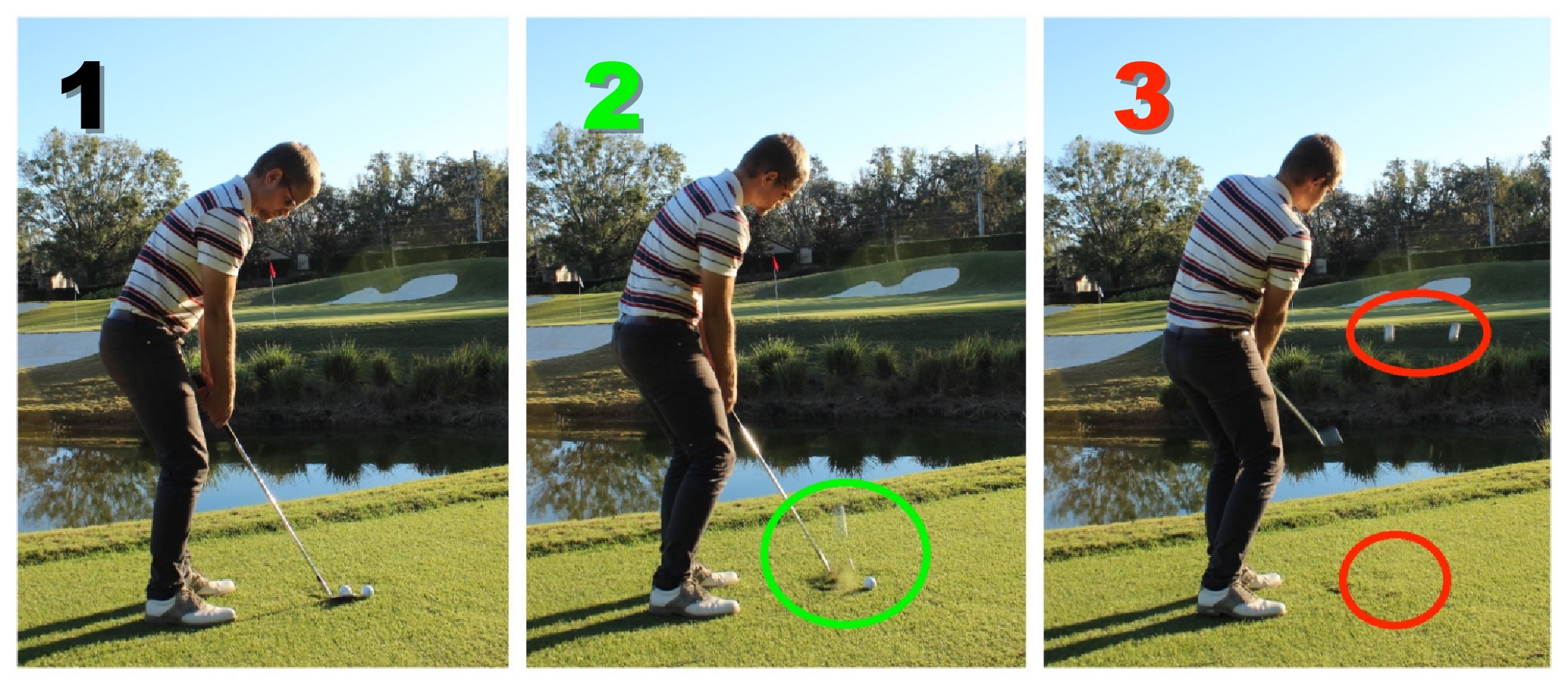Why Do I Shank My Irons

Striking a well-executed iron shot is a golfer’s delight, but for many players, the frustration of shanking their irons is an all-too-familiar experience. The shank, a dreaded mishit that sends the ball careening off to the side, can leave golfers scratching their heads in bewilderment. Why does it happen?
In this article, we will delve into the perplexing world of shanking irons and explore the underlying reasons behind this frustrating occurrence. Shanking can be a perplexing problem, affecting golfers of all skill levels, but understanding the root causes is the first step towards finding a solution.
Throughout this article, we will unravel the complex mechanics behind shanking and dissect the various factors that contribute to this mishit. From swing path and clubface alignment to weight distribution and grip pressure, we will explore the intricate details that can lead to a shank. By gaining a deeper understanding of these factors, you will be better equipped to address the issue and regain control over your iron play.
We will also provide practical tips, actionable advice, and effective drills to help you overcome the shanks and improve your iron striking consistency. So, let’s embark on this journey to demystify shanking and equip you with the knowledge and tools to elevate your iron play to new heights.

Understanding the Basics
What is a Shank in Golf?
Before we delve into the causes of shanking, let’s first understand what a shank is in golf. A shank occurs when the ball makes contact with the hosel (the rounded part of the clubhead where the shaft connects) instead of the clubface. This results in an errant shot that often veers sharply to the right (for right-handed golfers). Shanking can happen with any club, but it tends to be more common with irons due to their longer shaft length.
Differentiating between a shank and other types of mishits is essential for proper diagnosis and improvement. While a shank involves hitting the hosel, other mishits such as toe shots (hitting the ball toward the toe of the clubface) or thin shots (hitting the ball toward the bottom part of the clubface) have different causes and require different adjustments.
Impact of Shanking on Performance and Confidence
Shanking can have a significant impact on both your performance and confidence on the golf course. When you consistently shank your irons, it can lead to a loss of distance, accuracy, and control over your shots. Moreover, the fear of shanking can create anxiety and tension during your swing, further exacerbating the problem.
Understanding the mechanics behind shanking and addressing the root causes will help you regain control over your iron play and restore confidence in your ability to hit solid, accurate shots.
The Mechanics of the Shank
To effectively address the issue of shanking, it’s crucial to explore the various factors that contribute to this mishit. By understanding the mechanics involved, you can identify the root causes and implement the necessary adjustments to eliminate shanking from your game.
Swing Path and Clubface Alignment
One of the primary factors influencing a shank is the swing path and clubface alignment at impact. If your swing path is too much from inside-out or outside-in, combined with an open or closed clubface, the likelihood of shanking increases.
An inside-out swing path tends to push the hosel closer to the ball, increasing the chances of making contact with it. On the other hand, an outside-in swing path may cause the clubface to open, leading to a shank. Similarly, an open or closed clubface at impact can result in the ball striking the hosel instead of the clubface.
To correct swing path and clubface alignment issues, it’s crucial to work on your technique, focusing on proper body rotation, and maintaining a square clubface through impact.
Weight Distribution and Balance
Weight distribution and balance throughout the swing play a vital role in preventing shanks. Leaning too far back or forward during the swing can disrupt the club’s natural path and cause the hosel to make contact with the ball.
Maintaining a stable lower body and ensuring proper weight transfer during the swing can help maintain balance and prevent shanking. Practice drills that focus on weight shift and body stability can be beneficial in developing a more consistent swing motion.
Grip Pressure and Hand Position
Grip pressure and hand position are often overlooked but can significantly impact your ball striking. Gripping the club too tightly can restrict the clubhead’s movement, leading to an undesirable pattern break in your swing. On the other hand, gripping the club too loosely can result in a loss of control and stability.
Finding the right balance in grip pressure is crucial to avoid shanking. Experiment with different grip pressures during practice sessions to determine the level that allows for a fluid and controlled swing.
In addition to grip pressure, hand position also plays a role in shanking. An early release of the hands or flipping through impact can cause the clubhead to swing out and strike the hosel. Focus on maintaining a proper hand position through impact, allowing the clubface to stay square to the target.
By addressing swing path, clubface alignment, weight distribution, grip pressure, and hand position, you can significantly reduce the occurrence of shanking and improve your iron play.
Common Mistakes and Corrections
Understanding common mistakes that often lead to shanking is essential in the process of eliminating this issue from your game. By identifying these mistakes and implementing corrective measures, you can make significant improvements in your iron play.
Swaying or Sliding During the Swing
One common mistake that contributes to shanking is excessive lateral movement, such as swaying or sliding, during the swing. This lateral movement can lead to inconsistent contact and an increased likelihood of striking the hosel.
To correct this mistake, focus on maintaining a stable lower body throughout the swing. Practice drills that promote a centered pivot, such as the “feet together” drill, can help you develop a more stable and controlled swing motion.
Overuse of the Hands and Wrists
Another mistake that can lead to shanking is an overactive or “handsy” swing, where the hands and wrists dominate the motion. Excessive hand and wrist movement can cause the clubface to open or close, resulting in a shank.
To address this mistake, work on developing a more synchronized and connected swing. Focus on initiating the downswing with your lower body, allowing your hands and wrists to follow naturally. This promotes a smoother and more consistent swing, reducing the chances of shanking.
Rushing the Downswing or Deceleration
Rushing the downswing or decelerating through impact is a common error that can lead to shanking. When you rush the downswing, you may lose control over the clubhead, causing it to swing off path and make contact with the hosel.
On the other hand, decelerating through impact can also disrupt the club’s path, resulting in a shank. Maintain a smooth and balanced tempo throughout your swing, focusing on a controlled acceleration through impact. This helps ensure a solid strike on the clubface and minimizes the chances of shanking.
Lack of Clubface Awareness at Impact
Many golfers overlook the importance of clubface awareness at impact, which can contribute to shanking. Failing to pay attention to the clubface’s orientation and alignment can lead to inconsistent ball striking and the occasional shank.
To improve clubface awareness, incorporate alignment and target practice into your routine. Use alignment sticks or a visual reference to ensure your clubface is square to the target at address and throughout the swing. Developing a heightened sense of clubface awareness will lead to more consistent and accurate shots.
By addressing these common mistakes and implementing the necessary corrections, you can eliminate shanking from your iron play and enhance your overall performance on the golf course.
Understanding Iron Specifications
In addition to addressing swing mechanics and technique, understanding iron specifications can play a crucial role in preventing shanking and improving your iron play. Let’s explore the key iron specifications that you should consider:
Loft, Length, and Lie Angle
The loft, length, and lie angle of your irons significantly impact your ball striking and can contribute to shanking if not properly fitted to your swing. Let’s take a closer look at these specifications:
1. Loft: The loft of an iron determines the trajectory and distance of your shots. Irons with lower lofts produce lower ball flights and more distance, while irons with higher lofts generate higher ball flights and shorter distances. Choosing the appropriate loft for your swing speed and desired shot trajectory is crucial in avoiding shanking. For example, if your irons have lofts that are too strong for your swing, you may struggle to get the ball airborne consistently, increasing the risk of hitting the hosel.
2. Length: The length of your irons affects your swing mechanics and can influence the center of gravity at impact. If your irons are too long or too short for your height and posture, it can lead to inconsistencies in ball striking and increase the chances of shanking. Properly fitted irons ensure that you maintain a comfortable and balanced stance, facilitating solid contact with the clubface.
3. Lie Angle: The lie angle refers to the angle between the centerline of the shaft and the sole of the clubhead when the club is at address. An incorrect lie angle can cause the toe or heel of the clubhead to dig into the ground, resulting in inconsistent strikes and potential shanks. A club with a too upright or too flat lie angle may cause the hosel to make contact with the ball. Working with a professional club fitter can help determine the appropriate lie angle for your irons based on your swing characteristics and body measurements.
Considering these iron specifications and ensuring they are properly fitted to your swing can significantly improve your consistency and minimize the risk of shanking.
Mental Game and Shanking
The mental aspect of golf plays a crucial role in a player’s performance, and shanking can have a profound impact on a golfer’s mental state. Let’s explore some strategies to tackle the mental challenges associated with shanking and maintain a positive mindset on the course.
Addressing Psychological Aspects of Shanking
Shanking can be disheartening and frustrating, affecting your confidence and mental focus. It’s essential to address the psychological aspects to prevent it from negatively impacting your game. Here are a few tips to help you overcome the mental challenges associated with shanking:
1. Stay Calm and Composed: When you experience a shank, it’s crucial to stay calm and composed. Avoid getting frustrated or letting negative emotions take over. Take a deep breath, regroup, and approach the next shot with a positive mindset.
2. Reframe Your Perspective: Instead of dwelling on past shanks, reframe your perspective and view them as learning opportunities. Treat each shank as valuable feedback that can help you identify areas for improvement in your swing and technique.
3. Focus on Process, Not Outcome: Rather than obsessing over the outcome of each shot, shift your focus to the process. Concentrate on executing your swing with proper mechanics and technique. Trust that by consistently practicing and improving your fundamentals, the desired outcomes will follow.
4. Visualize Success: Use visualization techniques to mentally rehearse successful iron shots. Create a vivid mental image of hitting crisp, accurate shots with your irons. Visualizing success can help build confidence and reinforce positive swing patterns.
5. Practice Mindfulness: Incorporate mindfulness techniques into your golf routine. Stay present in the moment, fully experiencing each shot without judgment. Mindfulness can help you maintain focus, reduce anxiety, and perform at your best.
By addressing the psychological aspects of shanking and adopting a positive mindset, you can enhance your mental resilience and improve your overall performance on the golf course.
Fine-Tuning Your Iron Play
While understanding the causes of shanking is crucial, it’s equally important to fine-tune your iron play to minimize the chances of shanks and maximize your performance with irons. Let’s explore some areas to focus on when fine-tuning your iron play.
Alignment and Target Practice
Developing precise alignment skills is essential to avoid shanking and improve your ball-striking consistency with irons. Set up targets on the practice range or during your rounds and focus on hitting shots that start on the intended line. Utilize alignment aids or alignment sticks to reinforce proper alignment during your practice sessions. By consistently aligning yourself correctly to the target, you increase the chances of making solid contact with the clubface and minimizing shanks.
Consistent Swing Motion
Developing a repeatable and consistent swing motion is crucial for iron play. Focus on maintaining a smooth tempo, proper sequencing of the body and arms, and maintaining a stable lower body throughout the swing. A balanced and controlled swing allows for a more centered strike on the clubface and reduces the likelihood of shanking. Gradually increase your swing speed while maintaining control and balance to develop a consistent iron swing.
Distance Control and Trajectory Variation
Having control over your iron distances and the ability to vary your shot trajectories is essential for effective iron play. Work on developing a consistent and reliable distance control by practicing different swing lengths and focusing on the feel of each shot. Additionally, practice altering the trajectory of your iron shots, such as hitting a lower trajectory punch shot or a higher trajectory flop shot. This versatility will not only help you navigate various on-course situations but also reduce the risk of shanking by offering alternative shot options.
Pre-Shot Routine and Mental Preparation
Establishing a pre-shot routine and incorporating mental preparation techniques can greatly improve your iron play and reduce the chances of shanking. Develop a routine that includes visualizing the desired shot, taking practice swings to feel the proper swing motion, and aligning yourself to the target. This routine helps you mentally prepare for the upcoming shot, increases focus, and reduces tension or anxiety that can lead to shanks. Consistency in your pre-shot routine promotes a more relaxed and confident approach to each iron shot.
By focusing on alignment, developing a consistent swing motion, mastering distance control and trajectory variation, and incorporating a solid pre-shot routine, you can fine-tune your iron play and minimize the occurrence of shanks on the golf course.
Seeking Professional Assistance
Sometimes, seeking professional assistance can provide valuable insights and guidance to overcome persistent shanking issues. Working with a golf instructor or coach who specializes in iron play can help you identify specific areas of improvement, provide personalized instruction, and offer tailored drills and exercises to address your unique needs.
Expert Analysis
A golf instructor or coach can provide expert analysis of your swing mechanics, club positioning, and overall technique. They can offer objective feedback and identify any swing faults or inefficiencies that contribute to shanking. With their expertise, they can provide precise adjustments and guidance to help you correct those issues.
Customized Instruction
Working with a knowledgeable instructor ensures that you receive customized instruction tailored to your specific needs. They take into account factors such as your swing type, physical abilities, and learning style. Through personalized drills and exercises, they can help you address the specific aspects of your iron play that contribute to shanking.
Accountability and Support
Engaging in lessons with a professional instructor provides a structured and accountable approach to your improvement. They can monitor your progress, provide ongoing support and motivation, and keep you on track toward your goals. This accountability and support system can significantly enhance your learning experience and expedite your progress in eliminating shanking from your iron play.
When seeking professional assistance, consider factors such as the instructor’s qualifications, experience, and teaching style. Look for someone who has a track record of helping golfers overcome shanking issues and improving their iron play.
Troubleshooting Persistent Shank Issues
Despite your best efforts, you may encounter persistent shank issues that require additional troubleshooting. In such cases, it can be beneficial to explore potential underlying factors that contribute to shanking. Consider the following factors:
Physical Limitations or Restrictions
Physical limitations or restrictions in your body’s mobility, flexibility, or strength can impact your swing mechanics and contribute to shanking. Addressing these physical limitations through targeted exercises, stretching routines, or working with a fitness professional can help improve your overall golf swing and reduce the likelihood of shanking. For example, incorporating exercises that focus on improving hip mobility or shoulder rotation can enhance your ability to execute proper iron swings.
Equipment Inconsistencies or Deficiencies
In some cases, shanking issues may arise from equipment inconsistencies or deficiencies. Factors such as incorrect club length, improper lie angle, or worn-out grips can negatively affect your swing mechanics and contribute to shanks. Consult with a professional club fitter to ensure that your equipment is properly fitted to your specifications and suits your swing characteristics. They can assess your current equipment and make necessary adjustments or recommendations to improve your iron play.
If you’ve exhausted various practice methods, sought professional guidance, and addressed potential underlying factors but still struggle with shanking, consider seeking specialized help or advanced diagnostics. Technologies like launch monitors or high-speed video analysis can provide in-depth insights into your swing mechanics and help identify specific areas for improvement.
Remember that addressing shanking issues requires patience, persistence, and a commitment to ongoing improvement. Each golfer is unique, and the causes of shanking can vary. By continuously evaluating and refining your technique, seeking professional guidance when necessary, and adapting your practice routine, you can effectively troubleshoot and overcome persistent shank issues.
Summary and Conclusion
Shanking irons can be a frustrating obstacle in your golf game, but by understanding the mechanics, addressing common mistakes, fine-tuning your technique, and seeking professional assistance when needed, you can overcome this challenge. Focus on swing path, clubface alignment, weight distribution, grip pressure, hand position, and equipment specifications to reduce the chances of shanking.
Additionally, don’t underestimate the mental aspect of the game. Cultivate a positive mindset, address psychological aspects, and visualize success to overcome the mental challenges associated with shanking. Incorporate alignment and target practice, develop a consistent swing motion, and work on distance control and trajectory variation to fine-tune your iron play.
If persistent shanking issues persist, consider troubleshooting physical limitations or seeking professional assistance to address underlying factors. Remember, improvement takes time and effort, but with dedication and perseverance, you can overcome shanking and enjoy more consistent and confident iron play on the golf course.






